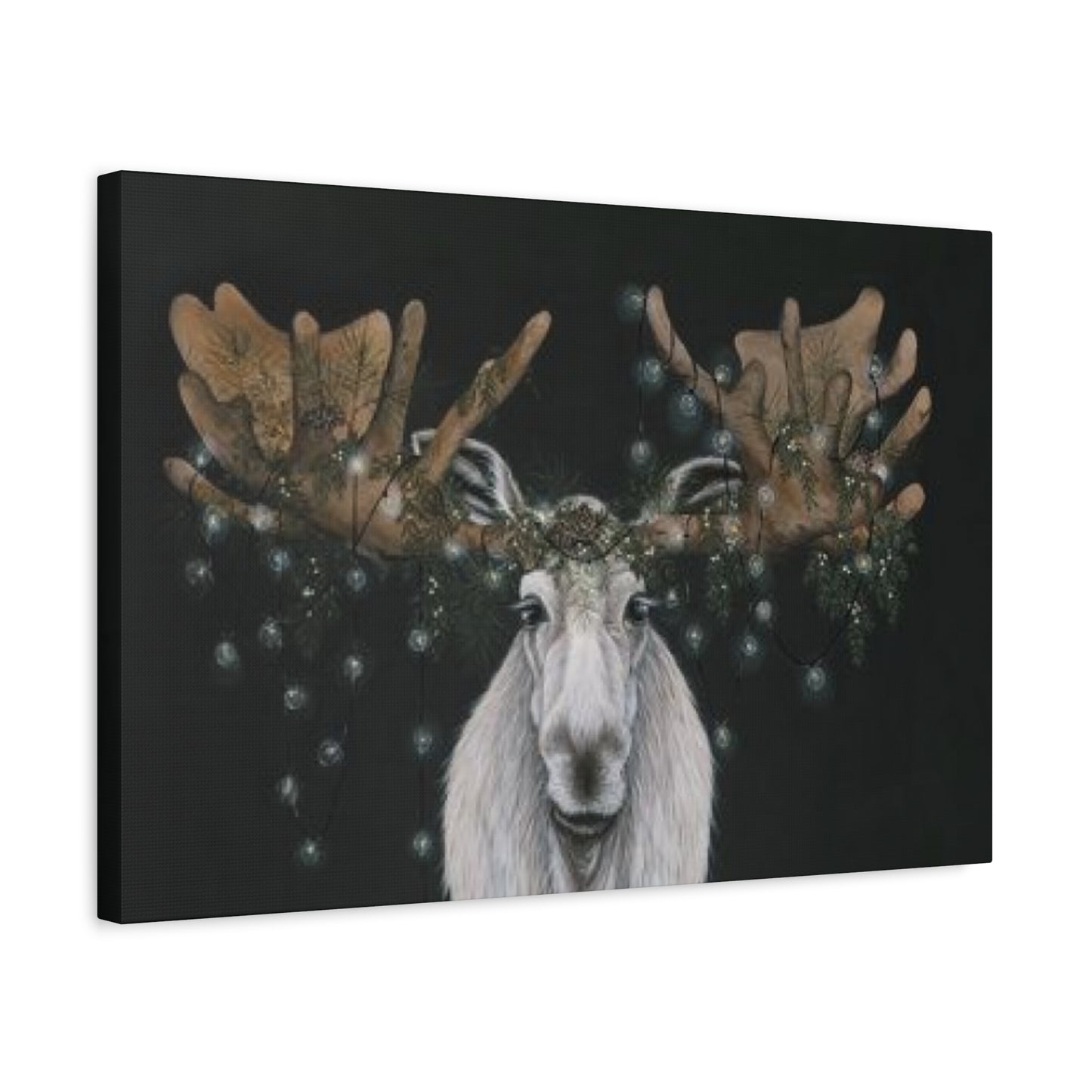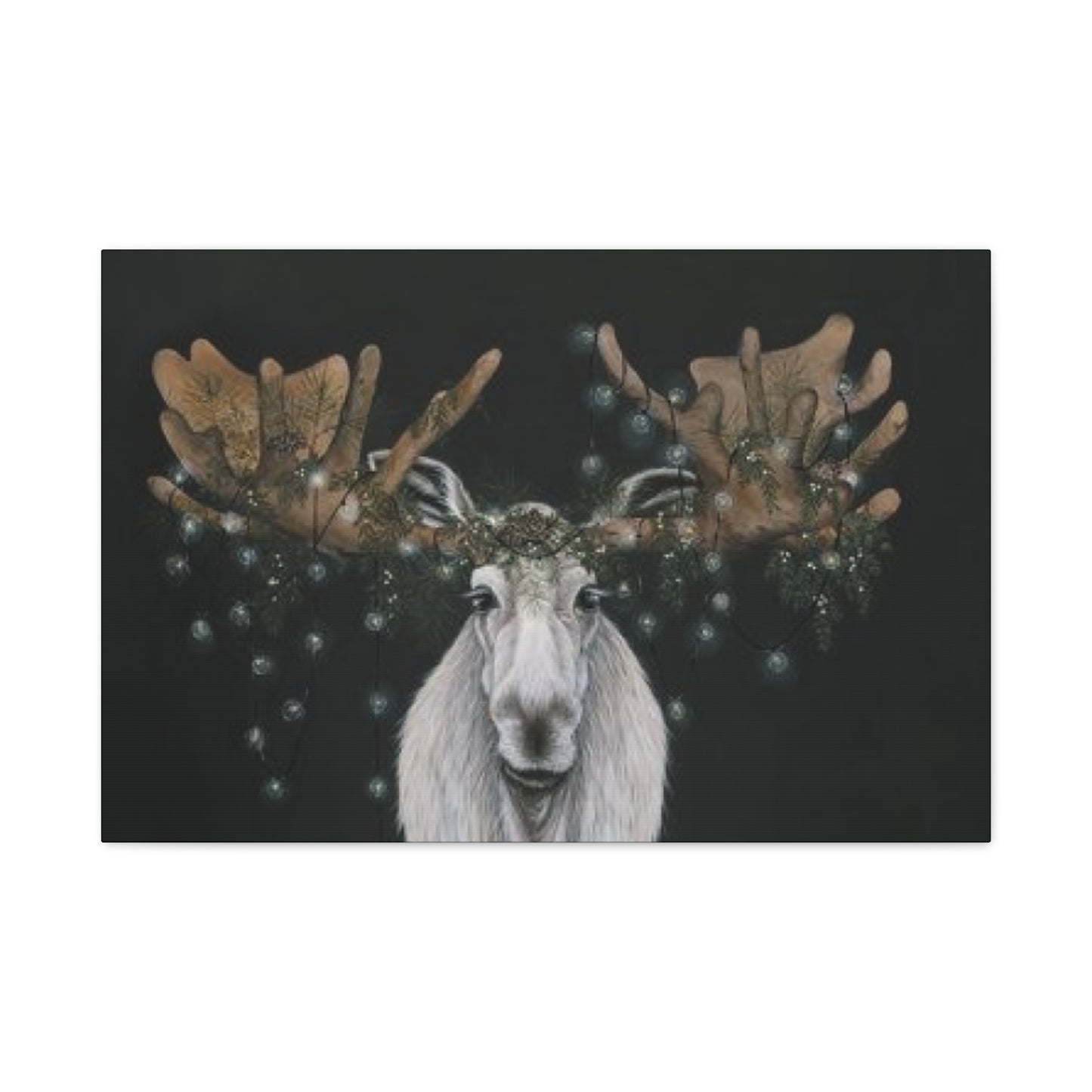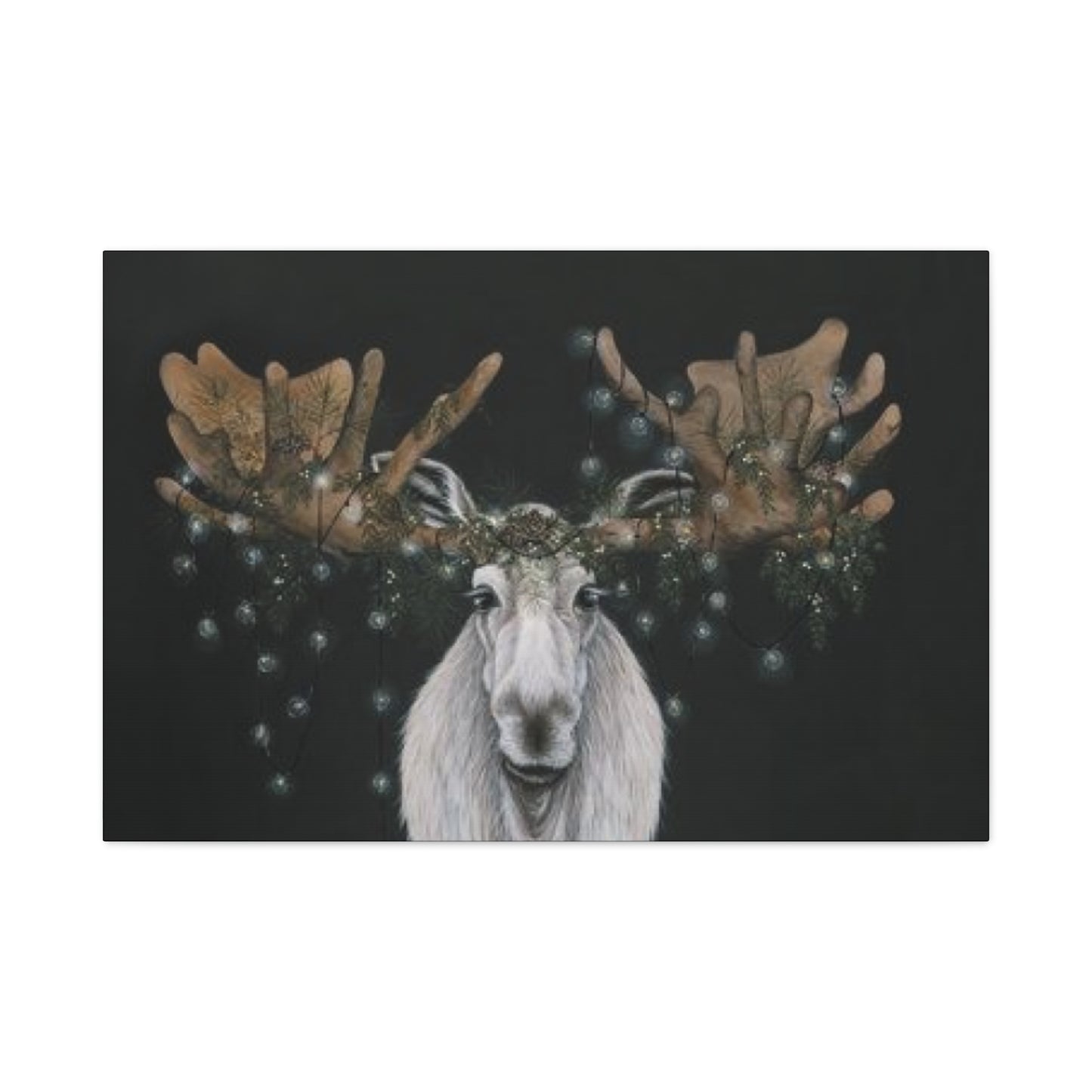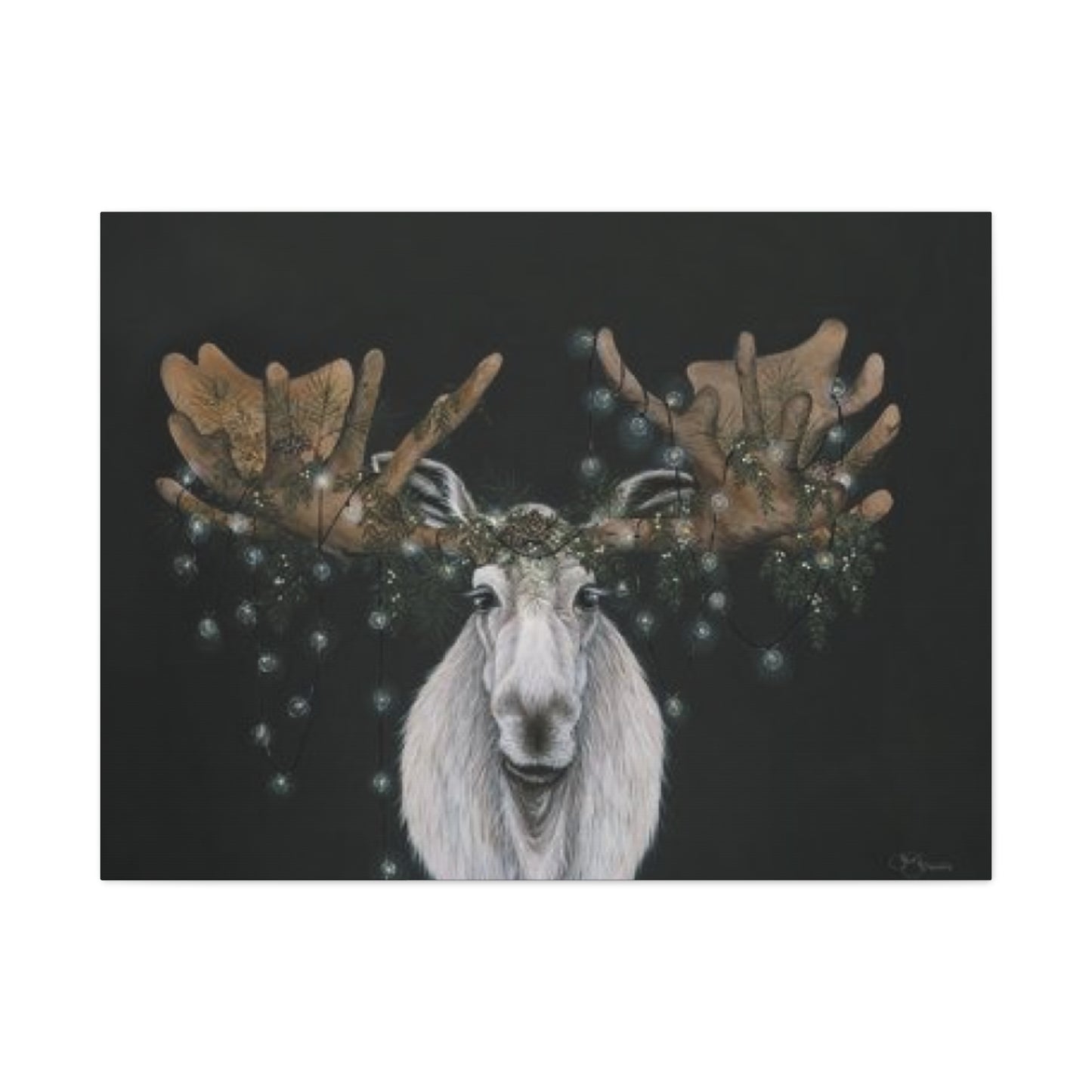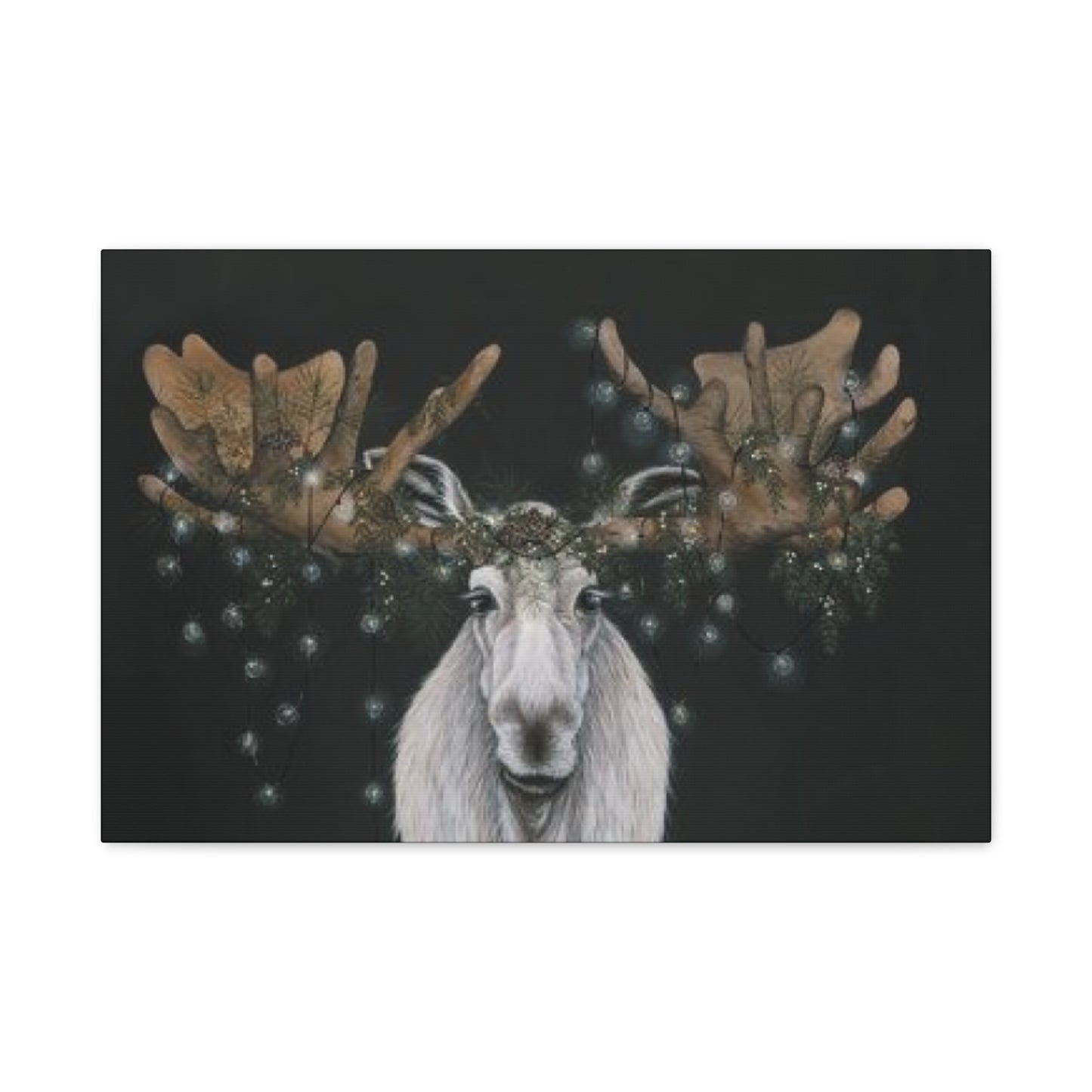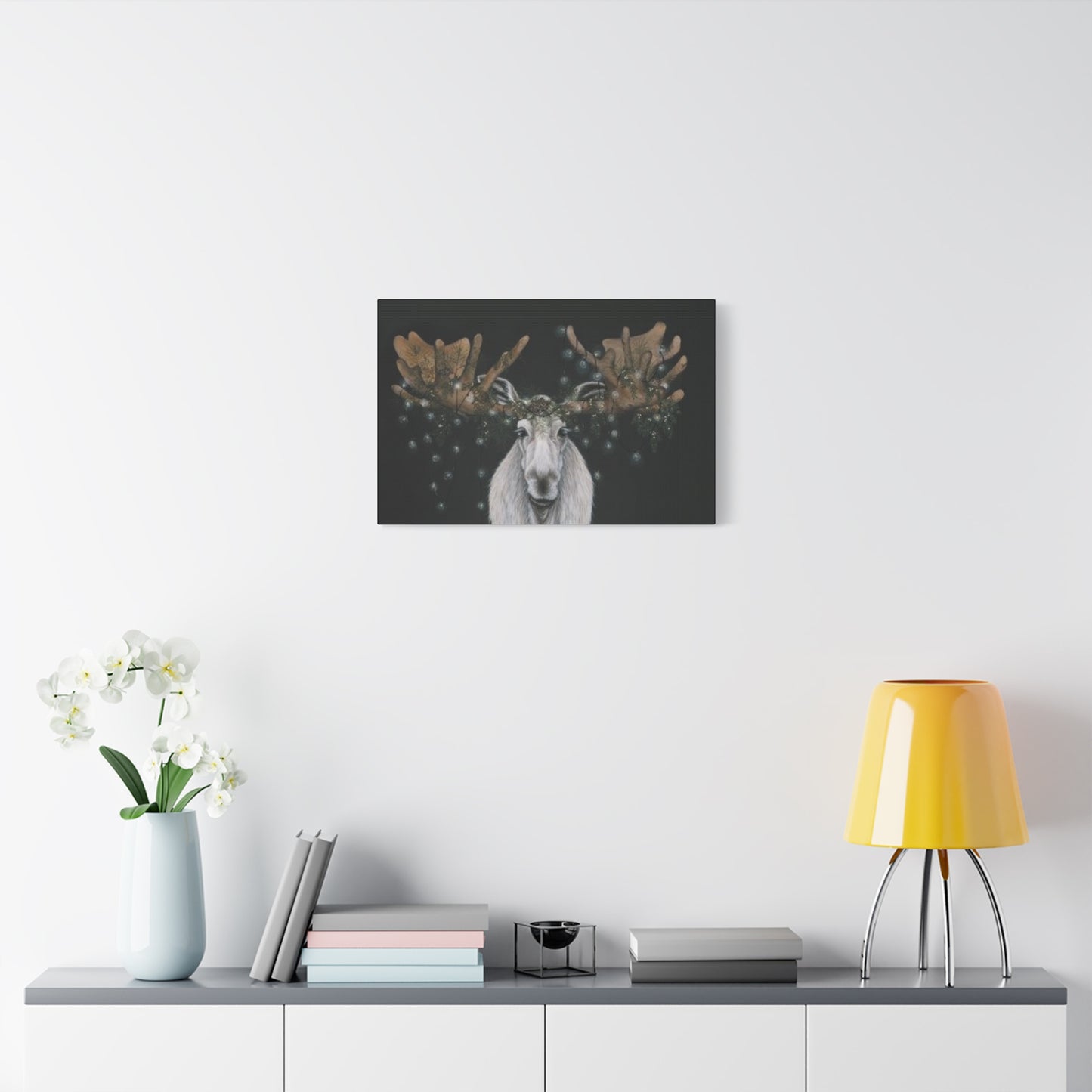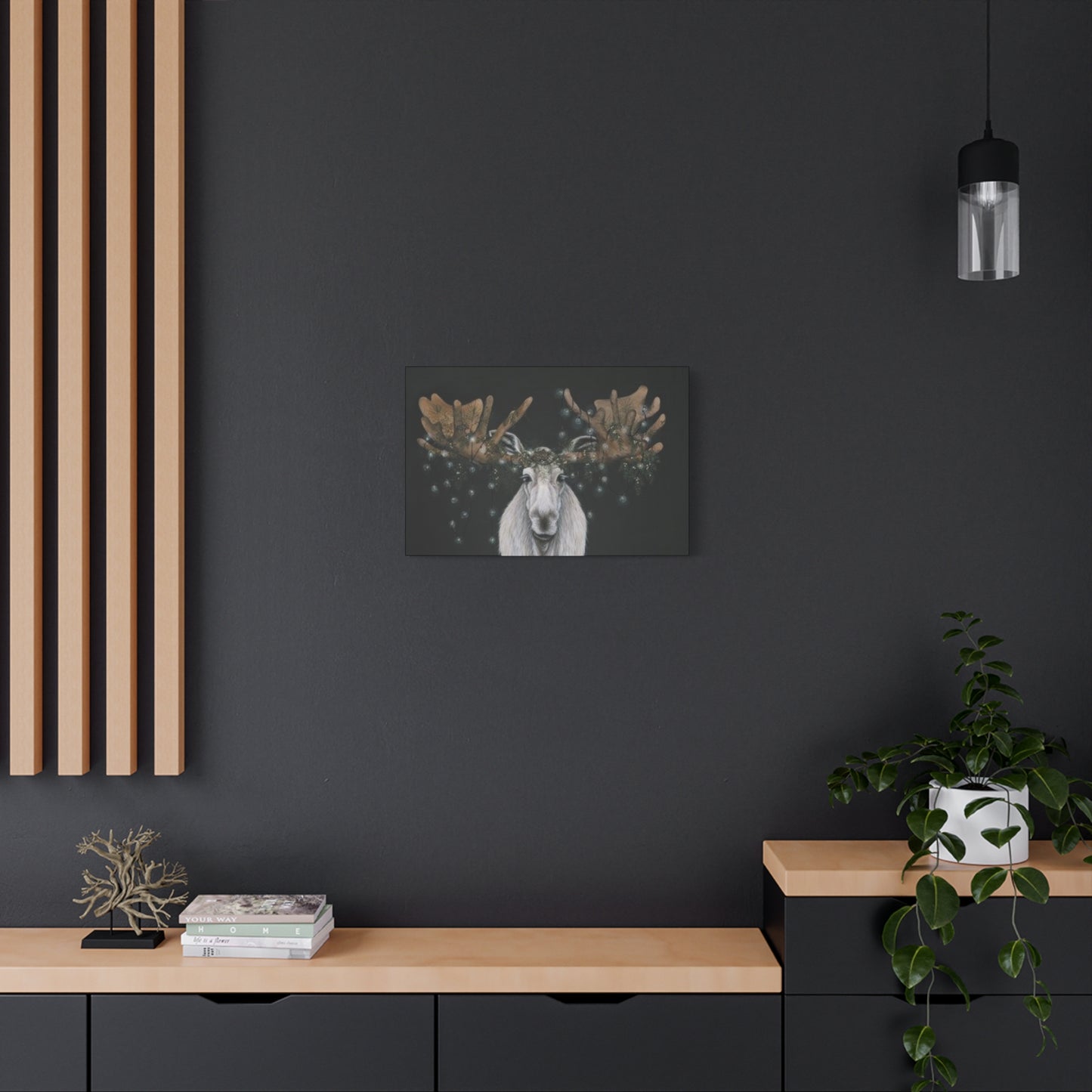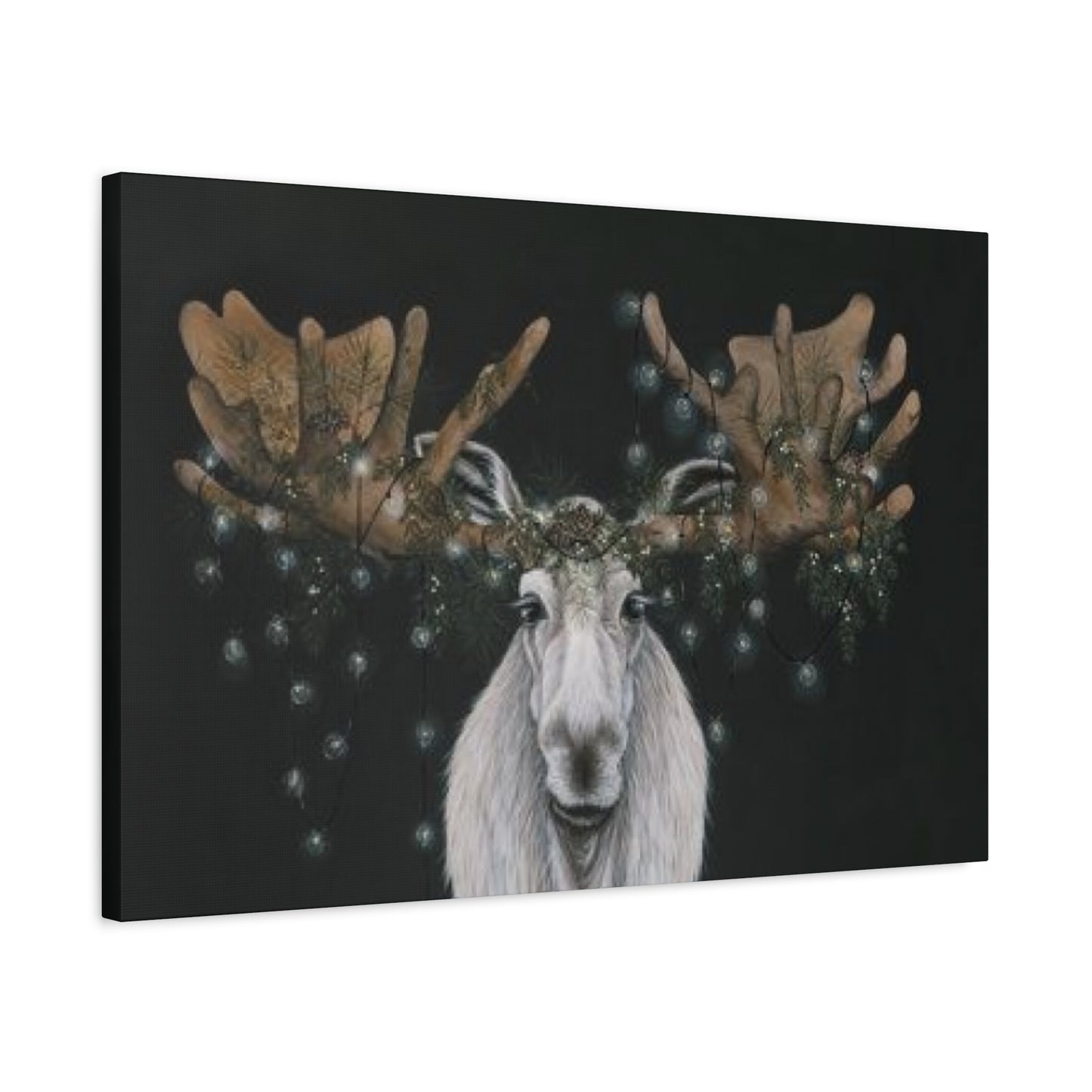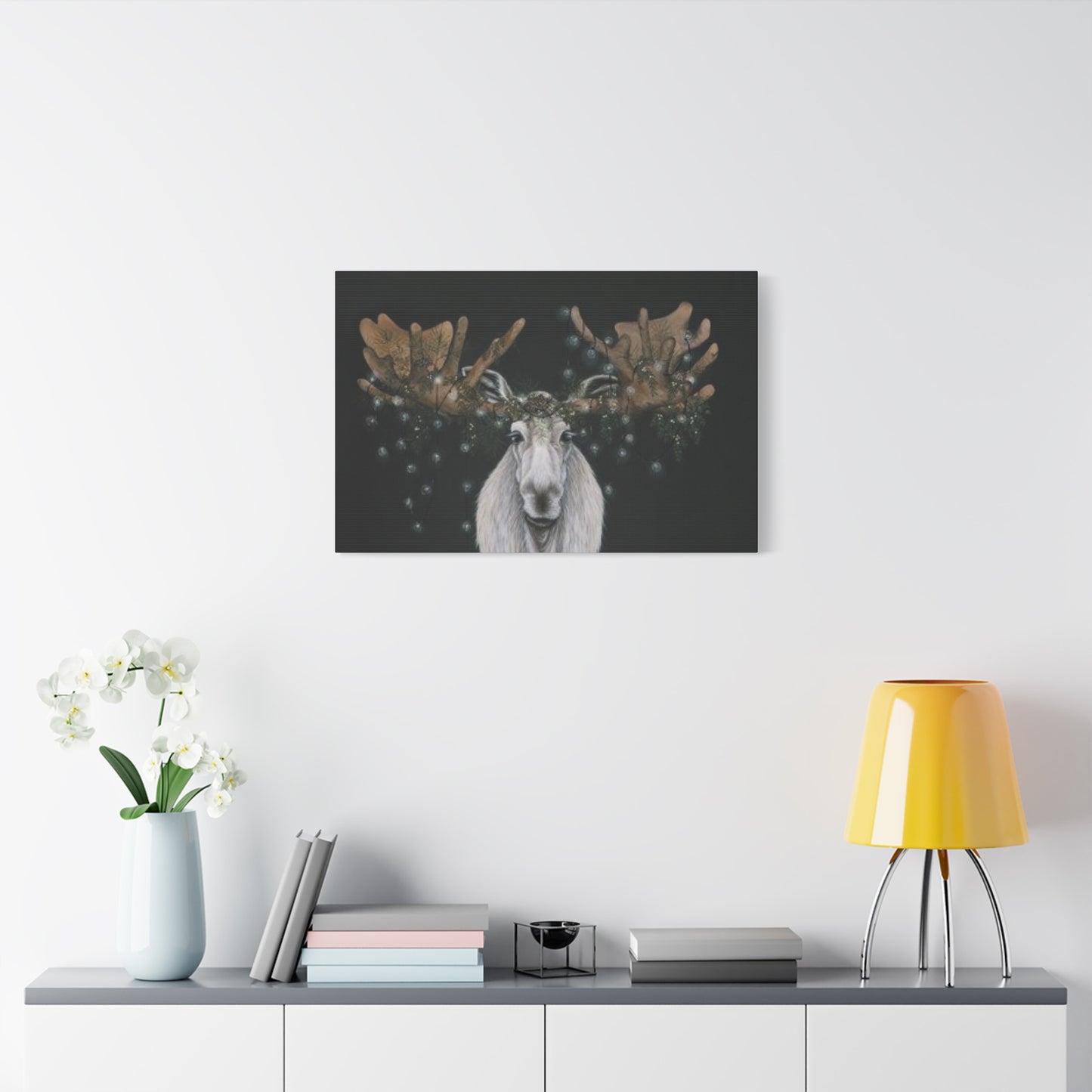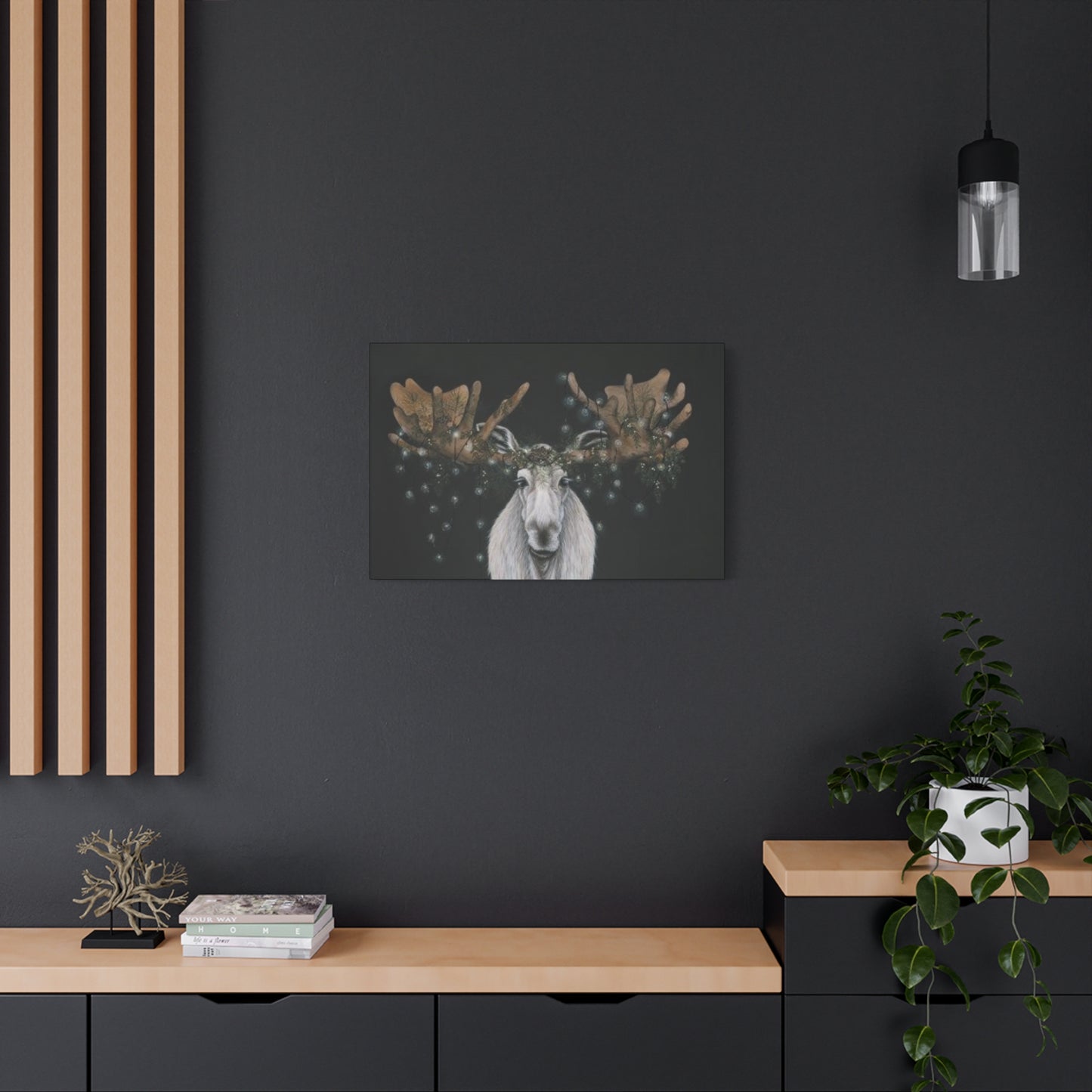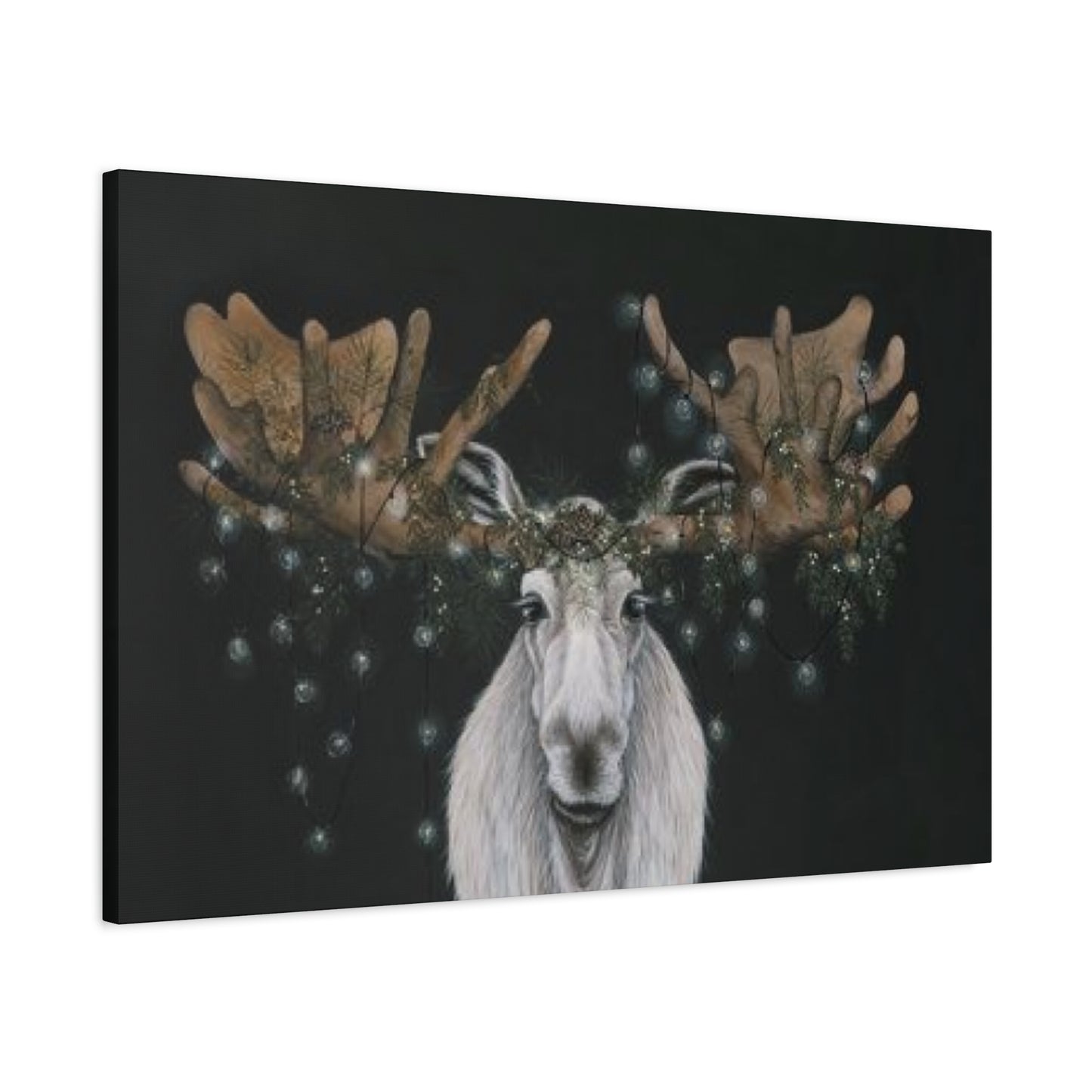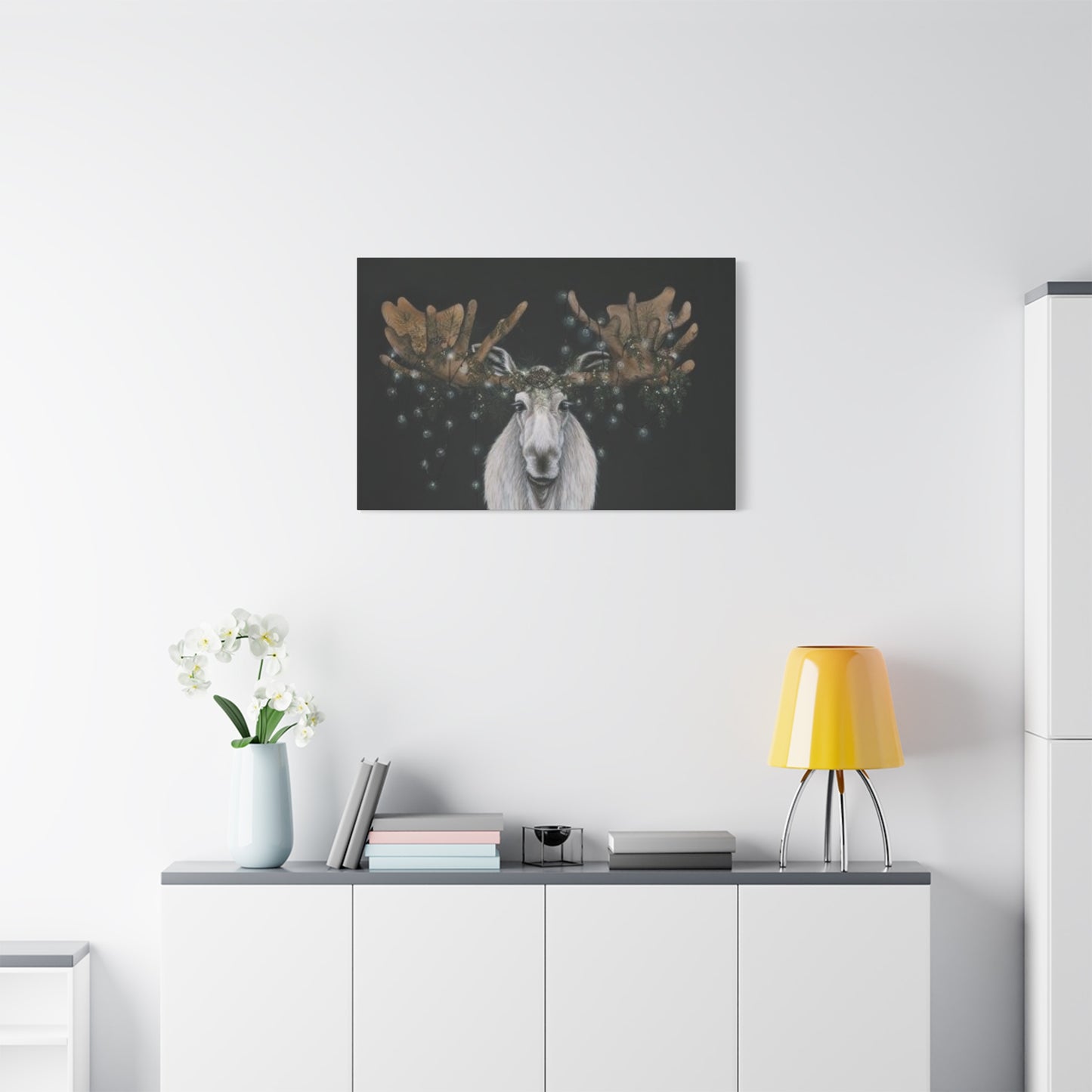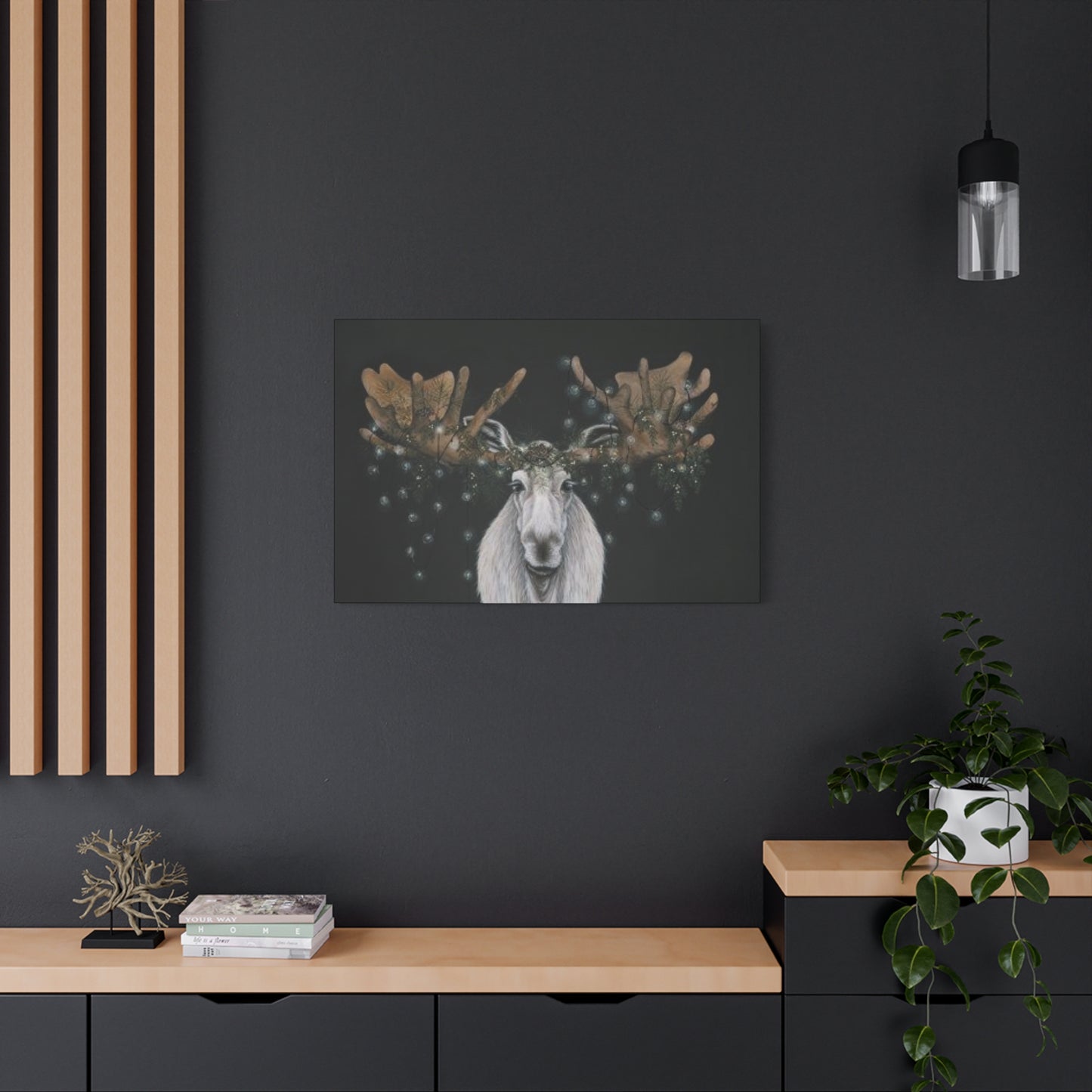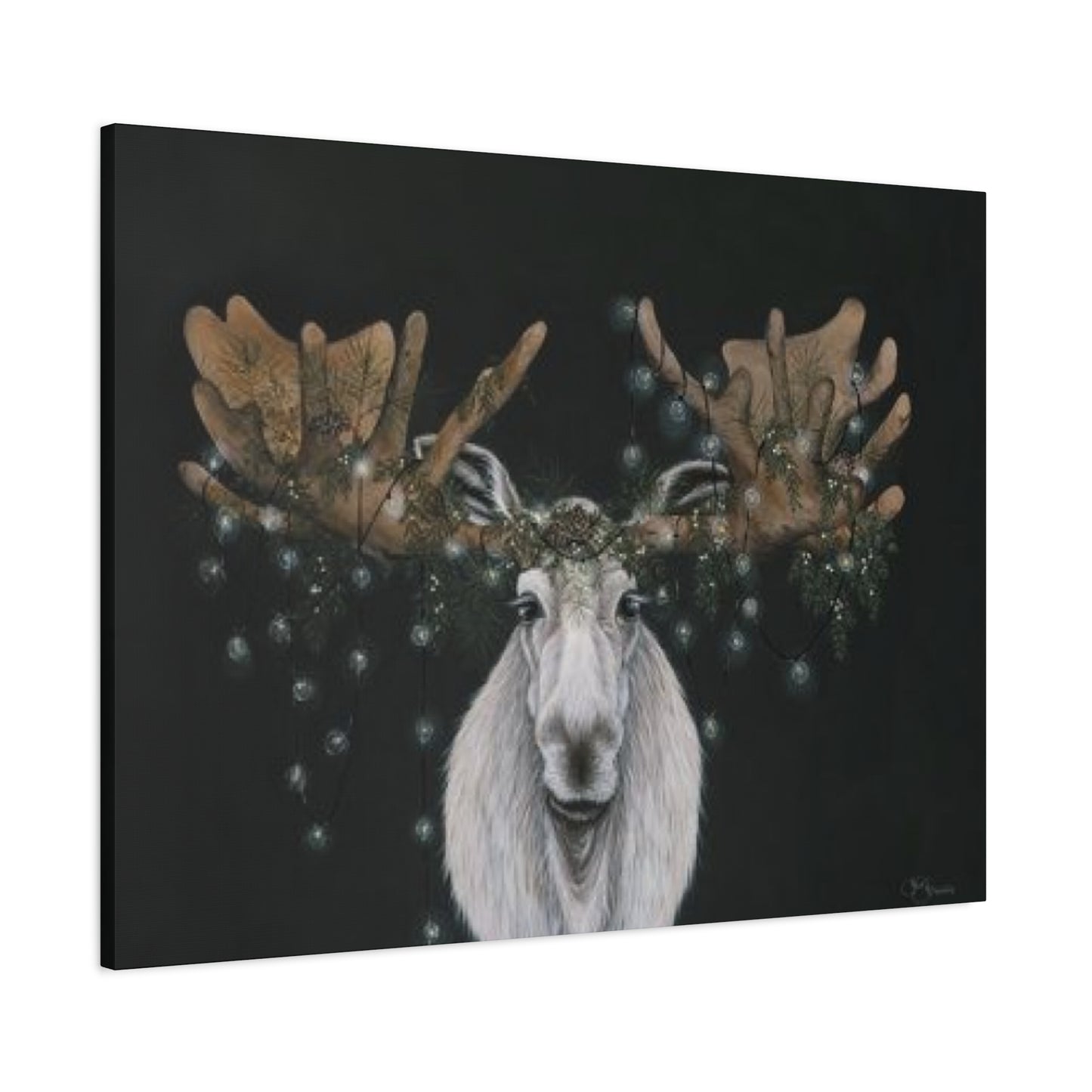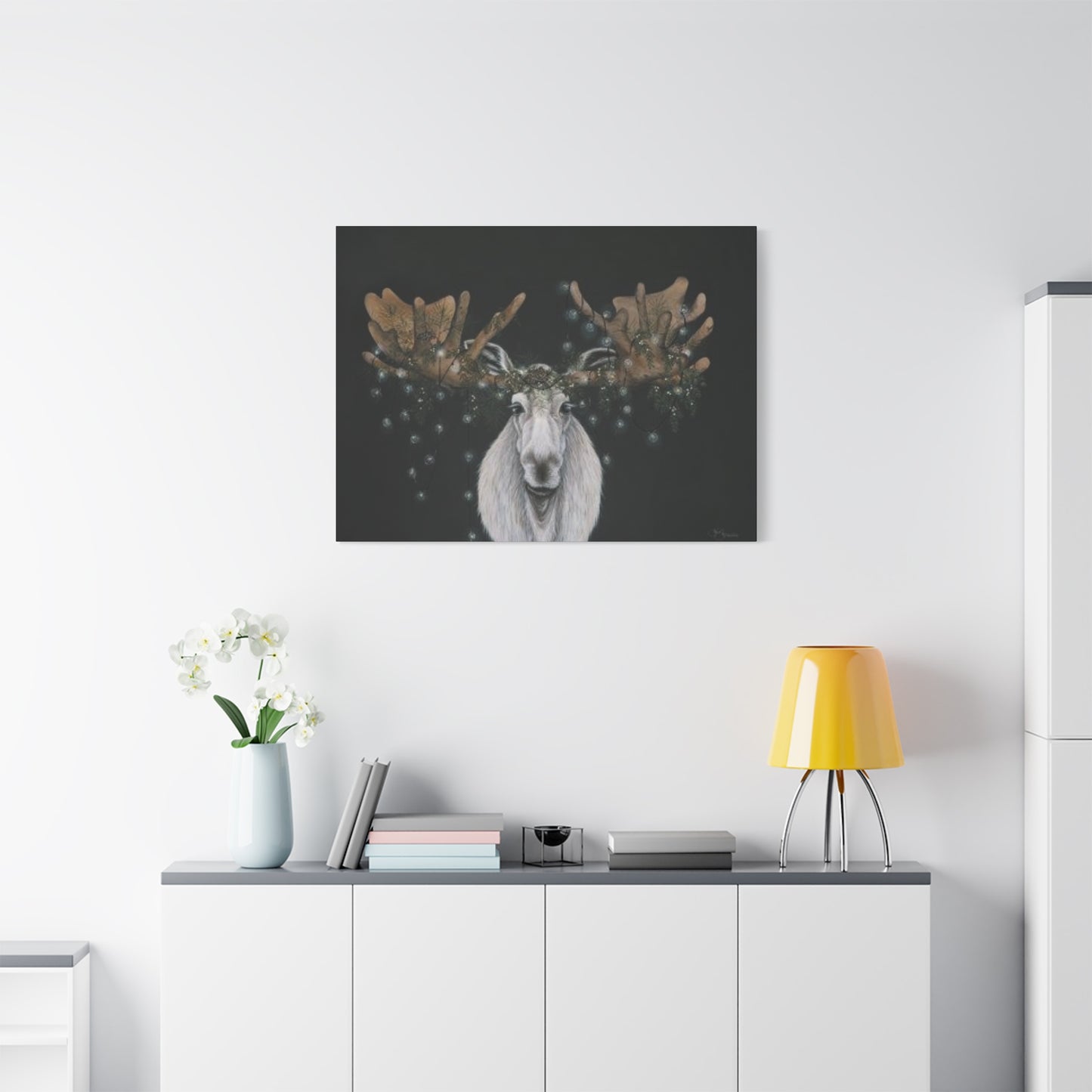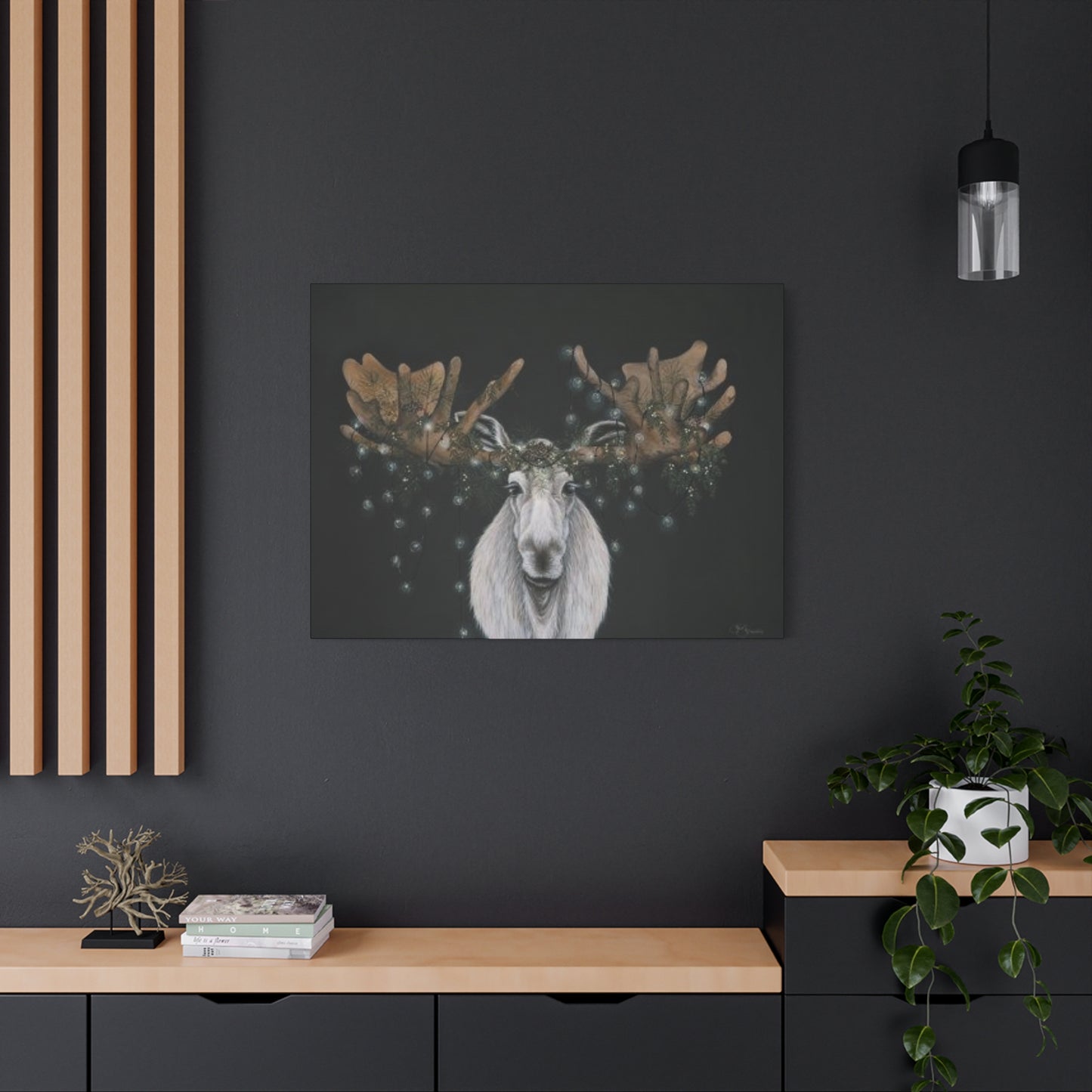Reindeer Decorated Wall Art: Bring Holiday Cheer to Your Home
Bringing the beauty of nature indoors has become an essential aspect of modern interior design, and few subjects capture the imagination quite like the majestic reindeer. These magnificent creatures, with their impressive antlers and graceful presence, have long symbolized the wild beauty of northern landscapes and the enchantment of winter seasons. Reindeer canvas prints offer homeowners, decorators, and art enthusiasts an exceptional opportunity to infuse their living spaces with natural elegance, creating focal points that inspire conversation and admiration.
The appeal of reindeer artwork extends far beyond simple decoration. These pieces carry cultural significance, evoke emotional connections to nature, and provide versatile design elements that complement various interior styles. Whether you're drawn to realistic portrayals that showcase every detail of these noble animals or prefer stylized interpretations that emphasize artistic expression, reindeer canvas art offers endless possibilities for personalizing your environment.
Canvas prints featuring reindeer have surged in popularity as homeowners seek meaningful artwork that reflects their personality and values. Unlike mass-produced posters or generic prints, high-quality canvas art delivers depth, texture, and visual impact that transforms ordinary walls into captivating displays. The combination of subject matter and medium creates pieces that feel both timeless and contemporary, making them suitable for traditional homes and modern apartments alike.
This comprehensive exploration delves into every aspect of reindeer canvas art, from understanding different artistic styles and selecting the perfect piece for your space to installation techniques and maintenance practices. Whether you're a first-time buyer or an experienced collector, you'll discover valuable insights that help you make informed decisions and create stunning visual displays that enhance your living environment for years to come.
The Timeless Appeal of Wildlife Art in Interior Design
Wildlife art has captivated human imagination for millennia, from ancient cave paintings to contemporary gallery exhibitions. The intrinsic connection between humans and the natural world manifests powerfully through artistic representations of animals in their habitats. Reindeer, as subjects, embody this connection particularly well, representing both the untamed wilderness and the enduring relationship between humans and nature throughout history.
Interior designers increasingly recognize the psychological benefits of incorporating nature-inspired artwork into residential and commercial spaces. Studies in environmental psychology demonstrate that visual connections to nature reduce stress levels, improve mood, and enhance overall wellbeing. Reindeer canvas prints serve as windows to natural landscapes, bringing the serenity of forests, tundra, and mountain ranges into urban apartments and suburban homes.
The versatility of wildlife art makes it suitable for virtually any room and design scheme. A carefully selected reindeer canvas can anchor a living room arrangement, create intimacy in a bedroom, or add sophistication to a home office. The neutral color palettes often associated with reindeer imagery blend seamlessly with existing décor while providing sufficient visual interest to prevent monotony.
Beyond aesthetic considerations, wildlife art reflects personal values and interests. Displaying reindeer artwork signals appreciation for nature, environmental consciousness, and perhaps a connection to northern cultures or winter sports. These pieces become conversation starters, allowing homeowners to share stories, experiences, and passions with guests while creating memorable impressions.
The enduring popularity of wildlife themes in interior design also speaks to a collective desire for authenticity in an increasingly digital world. Physical artwork provides tangible beauty that cannot be replicated by screens or virtual displays. The texture of canvas, the depth of colors, and the presence of a substantial piece on your wall create sensory experiences that enrich daily life in ways that digital images cannot match.
Understanding Different Styles of Reindeer Canvas Artwork
Reindeer canvas art encompasses an extraordinary range of artistic styles, each offering unique aesthetic qualities and emotional resonances. Understanding these different approaches helps buyers select pieces that align with their personal taste and interior design goals. From photorealistic renderings to abstract interpretations, the diversity within this category ensures that every art lover can find something meaningful.
Realistic and photographic styles capture reindeer with meticulous attention to anatomical accuracy and environmental detail. These pieces often showcase the animals in their natural habitats, surrounded by snow-covered landscapes, dense forests, or stark tundra. The technical skill required for such work results in breathtaking images that transport viewers to remote wilderness areas. These styles appeal particularly to nature enthusiasts, wildlife photographers, and those who appreciate traditional artistic techniques.
Impressionistic reindeer art takes a softer approach, emphasizing mood and atmosphere over precise detail. Artists working in this style use loose brushstrokes, blended colors, and suggestion rather than explicit rendering to convey the essence of their subjects. The result is artwork that feels dreamlike and emotional, perfect for creating tranquil, contemplative spaces. Impressionistic pieces work exceptionally well in bedrooms, meditation rooms, and other areas designed for relaxation.
Contemporary and modern styles reimagine reindeer through bold colors, geometric shapes, and unconventional compositions. These pieces might feature reindeer silhouettes filled with abstract patterns, vivid color schemes that depart from natural palettes, or fragmented forms that challenge traditional representation. Such artwork appeals to design-forward individuals who appreciate innovation and want their spaces to reflect current artistic trends.
Minimalist interpretations reduce reindeer imagery to its essential elements, using simple lines, limited color palettes, and generous negative space. These pieces embody the philosophy that less is more, creating powerful visual statements through restraint rather than elaboration. Minimalist reindeer art complements Scandinavian design aesthetics, modern interiors, and spaces where calm, uncluttered atmospheres are priorities.
Vintage and rustic styles evoke nostalgia and connection to traditional ways of life. These pieces might incorporate weathered textures, muted earth tones, and compositions reminiscent of historical wildlife illustrations or folk art. They create warm, inviting atmospheres particularly suited to cabins, country homes, or urban spaces seeking to balance contemporary conveniences with rural charm.
Abstract reindeer art pushes boundaries further, using the animal as a starting point for explorations of color, form, and emotional expression. These pieces may barely resemble their subjects in conventional terms, yet they capture something essential about the spirit or energy of reindeer. Abstract work appeals to adventurous collectors who view art as a medium for personal interpretation and emotional engagement rather than literal representation.
Choosing the Perfect Size for Your Space
Selecting the appropriate size for reindeer canvas art is crucial for achieving visual balance and maximum impact in your interior design. The dimensions of your artwork should relate proportionally to the wall space available, the furniture arrangement, and the overall scale of the room. Understanding these relationships ensures that your investment enhances rather than overwhelms or underwhelms your space.
For walls above sofas, console tables, or beds, the general guideline suggests artwork should span approximately two-thirds to three-quarters the width of the furniture below it. This proportion creates visual harmony and prevents pieces from appearing lost on large expanses of wall. A standard sofa measuring seven feet wide pairs well with canvas art ranging from four to five feet in width, creating a balanced, intentional appearance.
Large statement pieces measuring five feet or more in width or height serve as dramatic focal points in spacious rooms with high ceilings. These substantial canvases command attention and can anchor entire design schemes. However, such pieces require adequate viewing distance to be appreciated fully. In smaller rooms, oversized art may feel overwhelming rather than impressive, so consider the relationship between artwork dimensions and room size carefully.
Medium-sized canvases, typically ranging from two to four feet in their largest dimension, offer versatility suitable for most residential applications. These pieces work well in dining rooms, bedrooms, home offices, and smaller living areas. They provide sufficient visual impact to serve as focal points while maintaining proportions that feel comfortable rather than dominating.
Small canvas prints under two feet create opportunities for gallery wall arrangements, accent displays, or intimate spaces like powder rooms, hallways, and reading nooks. While individually modest, these pieces gain significance through thoughtful grouping and arrangement. Multiple small reindeer canvases can create cohesive narratives or explore variations on a theme.
Multi-panel or triptych arrangements divide a single image across multiple canvases, creating dynamic installations with built-in visual rhythm. These configurations work particularly well for wide wall spaces where single pieces might appear isolated. The gaps between panels add contemporary flair while the unified image maintains coherence. Triptych reindeer art offers flexibility in arrangement, allowing slight variations in spacing to accommodate architectural features or personal preferences.
When evaluating size options, consider viewing distance and the purpose of the space. Artwork in rooms where people remain seated, like living rooms and dining areas, can be slightly smaller since viewers examine them from fixed positions. Conversely, artwork in hallways and entryways benefits from larger sizes or bolder imagery since people often pass by quickly without stopping to examine details closely.
Color Palettes and Their Impact on Room Ambiance
The color scheme of reindeer canvas art profoundly influences the mood, atmosphere, and cohesiveness of interior spaces. Understanding color psychology and how different palettes interact with existing décor enables you to select artwork that achieves your desired emotional effect while maintaining visual harmony throughout your home.
Neutral palettes featuring blacks, whites, grays, and browns create sophisticated, timeless displays that adapt easily to changing décor trends. Reindeer rendered in monochromatic schemes or subtle earth tones provide elegant focal points without competing for attention with other design elements. These color schemes work exceptionally well in contemporary, minimalist, and transitional interiors where restraint and refinement are valued.
Cool color palettes dominated by blues, silvers, and icy whites evoke winter landscapes and northern wilderness areas. These colors create serene, calming atmospheres particularly suitable for bedrooms, bathrooms, and spaces dedicated to relaxation. Cool-toned reindeer art can also make rooms feel more spacious and airy, a valuable quality in smaller areas or spaces with limited natural light.
Warm color schemes incorporating golds, russets, browns, and soft oranges generate cozy, inviting environments. Reindeer art featuring autumn forests, golden hour lighting, or warm earth tones promotes comfort and intimacy. These palettes work beautifully in living rooms, family rooms, and dining areas where gathering and connection are priorities. Warm tones also complement wood furniture and traditional design elements effectively.
Dramatic contrast between light and dark creates visual impact and emotional intensity. Black and white reindeer art or pieces featuring strong tonal contrasts draw the eye immediately and make bold statements. These high-contrast works suit modern interiors, accent walls, and spaces where you want artwork to serve as the undisputed focal point. The dramatic quality can energize spaces and create memorable visual experiences.
Vibrant, unconventional color schemes transform reindeer imagery into contemporary artistic statements. Electric blues, vivid purples, bright teals, or unexpected color combinations appeal to design-forward individuals who embrace creativity and personal expression. These pieces become conversation starters and inject personality into otherwise neutral spaces. When working with bold colors, ensure your canvas coordinates with at least one or two elements in the room to maintain visual cohesiveness.
Seasonal color transitions offer opportunities to refresh your space throughout the year. Reindeer art with rich greens and warm browns suits spring and summer months, while pieces emphasizing whites, silvers, and cool blues feel appropriate for autumn and winter. Some collectors maintain small collections of reindeer canvas prints in different color schemes, rotating them seasonally to keep interiors feeling current and responsive to the natural yearly cycle.
Consider the existing color palette of your space when selecting reindeer artwork. Complementary colors, which sit opposite each other on the color wheel, create vibrant, energetic combinations. Analogous colors, positioned adjacent on the wheel, produce harmonious, cohesive schemes. Monochromatic approaches using various shades and tints of a single color create sophisticated, unified looks. Understanding these color relationships helps you make selections that enhance rather than clash with your established décor.
Material Quality and Canvas Construction
The quality of materials and construction methods significantly impacts the appearance, longevity, and value of reindeer canvas art. Understanding what distinguishes superior canvas prints from inferior alternatives empowers buyers to make informed investments that deliver lasting satisfaction and maintain their beauty through years of display.
Premium canvas prints utilize high-grade cotton or polyester canvas specifically manufactured for fine art reproduction. Cotton canvas, particularly museum-quality options, offers superior texture, durability, and color retention compared to synthetic alternatives. The weave density, measured in threads per inch, affects how smoothly images reproduce and how well the material resists sagging over time. Dense, tight weaves provide better foundations for detailed artwork than loose, coarse fabrics.
Professional printing technologies determine how accurately and vibrantly artwork transfers to canvas. Giclee printing, considered the gold standard for fine art reproduction, uses archival-quality pigment-based inks that resist fading for decades when properly displayed. These inks penetrate canvas fibers rather than sitting on the surface, creating rich colors with exceptional depth and subtle tonal gradations. Lower-quality dye-based inks may look adequate initially but often fade significantly within months or years, particularly when exposed to natural light.
Stretcher bars, the wooden frames that support canvas from behind, contribute substantially to the stability and appearance of finished pieces. Solid wood stretcher bars crafted from kiln-dried lumber resist warping and provide sturdy foundations. The depth of stretcher bars affects the dimensional presence of artwork, with deeper profiles creating more substantial, gallery-style presentations. Standard depths range from three-quarters of an inch to two inches or more, with deeper options generally commanding premium prices.
Corner construction methods influence how well canvas maintains tension and shape over time. Mitered corners joined with mortise-and-tenon joinery or metal braces offer superior strength compared to simple butt joints. Some premium canvases feature adjustable corner keys, small wooden wedges that can be tapped deeper into corner joints to restore tension if canvas loosens slightly over years of display.
Coating and finishing treatments protect printed surfaces and enhance visual appeal. UV-protective coatings shield artwork from sun damage without significantly altering appearance. Matte finishes eliminate glare and provide sophisticated, non-reflective surfaces, while gloss coatings enhance color vibrancy and create lustrous, eye-catching presentations. Satin finishes split the difference, offering subtle sheen without excessive reflectivity.
The method of gallery wrapping, where canvas extends around stretcher bar edges, affects both appearance and installation. Traditional gallery wraps continue the image around sides, creating seamless presentations that look finished from any angle. Mirror wraps reflect edge portions of the image around sides, while solid color wraps use complementary tones. Each approach offers distinct aesthetic qualities suited to different preferences and display contexts.
Backing materials protect canvas from dust, moisture, and physical damage. Dust covers crafted from paper or fabric seal the back of stretched canvas, preventing debris accumulation and providing professional finishing touches. Some manufacturers include hanging hardware pre-installed, offering convenience and ensuring proper weight distribution for secure mounting.
Artistic Techniques and Printing Technologies
The methods used to create and reproduce reindeer canvas art significantly influence the final product's aesthetic qualities, authenticity, and value. Understanding various artistic techniques and printing technologies helps collectors appreciate the craftsmanship involved and make selections aligned with their preferences and budgets.
Original paintings represent the pinnacle of artistic authenticity, with each piece being unique and irreproducible. Artists who specialize in wildlife subjects spend years developing technical skills and observational knowledge that enable them to capture the essence of reindeer with remarkable fidelity. Original works command premium prices reflecting the artist's training, reputation, and the time invested in creation. For collectors, originals offer investment potential and the satisfaction of owning singular artistic expressions.
Limited edition prints occupy a middle ground between originals and mass-produced reproductions. Artists or publishers produce these prints in predetermined quantities, often signing and numbering each piece. The controlled scarcity maintains value while making artwork more accessible than originals. Limited editions often feature certificates of authenticity documenting edition size, the artist's signature, and other relevant details that collectors value.
Digital art creation has revolutionized wildlife illustration, allowing artists to work with unprecedented precision and flexibility. Digital artists use specialized software and hardware to create reindeer imagery that may be indistinguishable from traditional media. The digital workflow enables experimentation, easy revision, and perfect reproduction without quality loss. Many contemporary artists combine traditional and digital techniques, beginning with hand-drawn sketches or paintings that they then refine digitally.
Photographic reindeer art requires different skills than illustration or painting but demands equal artistic vision. Wildlife photographers spend countless hours in harsh conditions waiting for perfect moments that capture these animals' majesty and character. The best wildlife photography transcends mere documentation, revealing personality, emotion, and narrative through composition, lighting, and timing. When reproduced on canvas, photographs acquire painterly qualities that distinguish them from standard photographic prints.
Mixed media approaches combine multiple techniques and materials to create layered, textured artwork. An artist might begin with photographic elements, add painted details, incorporate digital effects, and finish with hand-applied textures or embellishments. These hybrid works offer unique aesthetic qualities that pure techniques cannot achieve, resulting in pieces that reward close examination with discovered details.
The printing process itself constitutes an art form requiring technical expertise and quality equipment. Giclee printing, utilizing specialized inkjet printers with twelve or more individual ink cartridges, produces color accuracy and tonal range far exceeding standard printing methods. Professional print technicians calibrate equipment precisely, ensure proper color profiles, and select optimal print settings for each image. The marriage of technology and craftsmanship results in reproductions that honor original artwork while offering practical advantages like durability and affordability.
Some canvas prints receive hand-applied enhancements after printing, with artists adding painted details, textures, or embellishments that transform reproductions into unique pieces. These touched-up canvases bridge the gap between pure prints and original paintings, offering collectors semi-unique works at intermediate price points. The additional hand work creates surface variations that catch light differently than flat prints, adding visual interest and perceived value.
Framing Options and Presentation Styles
How reindeer canvas art is framed and presented dramatically affects its visual impact and compatibility with interior design schemes. Understanding available options enables you to select presentation styles that complement both the artwork itself and your existing décor, creating cohesive, polished displays.
Gallery-wrapped canvas without additional framing represents the most popular contemporary presentation style. In this approach, printed canvas extends around all four edges of the stretcher bars, creating finished sides that require no frame. The clean, modern aesthetic suits minimalist and contemporary interiors while offering practical advantages like reduced cost and simplified installation. Gallery-wrapped pieces appear to float on walls, creating subtle dimensional effects particularly effective with deeper stretcher bars.
Traditional wooden frames add structure, protection, and formal presence to canvas prints. Frame styles range from ornate gilded designs suitable for classical interiors to simple, streamlined profiles that complement modern spaces. Wood species, stains, and finishes should coordinate with existing furniture and architectural elements for visual harmony. Frames also allow you to adjust the apparent size of artwork, with wider frames increasing overall dimensions and narrow profiles maintaining focus on the image itself.
Floating frames create contemporary presentations where canvas appears suspended within a frame without touching it. A small gap between canvas edges and frame interior creates shadow lines that emphasize dimensionality. These frames work exceptionally well with gallery-wrapped canvas, accentuating the three-dimensional quality while providing additional structure and refinement. Floating frames suit transitional and modern interiors particularly well.
Black frames offer versatile sophistication that complements virtually any image and interior style. The neutral quality allows artwork to command attention while the frame provides subtle definition and polish. Black works especially well with contemporary and minimalist designs, photographs, and high-contrast imagery. Various black finishes, from matte to glossy, create different effects worth considering based on overall design goals.
White and light-colored frames create airy, open presentations that make spaces feel larger and brighter. These frames work beautifully with coastal, Scandinavian, and cottage design styles. Light frames also complement reindeer artwork featuring snowy landscapes or predominantly white color schemes, creating cohesive presentations where frame and image feel intentionally unified.
Natural wood frames in various species and finishes connect artwork to organic materials and rustic aesthetics. Oak, walnut, maple, and pine each offer distinct grain patterns and color tones that can either blend subtly with images or provide deliberate contrast. Natural wood frames suit cabin décor, traditional interiors, and spaces emphasizing natural materials and textures.
Metal frames deliver industrial-chic aesthetic perfect for loft apartments, modern offices, and contemporary homes. Aluminum, steel, and other metals offer clean lines, durability, and finishes ranging from brushed nickel to powder-coated colors. Metal frames create sleek, professional appearances particularly effective with photographic or modern artistic styles.
Ornate, carved frames suit traditional, classical, and maximalist interiors. These elaborate frames transform canvas prints into statement pieces with historical resonance. Gold leaf, silver leaf, and antique finishes on carved wood create gallery-quality presentations suitable for formal spaces. However, such frames can overwhelm simple or minimalist artwork, so matching frame elaboration to image complexity ensures harmonious results.
Strategic Placement for Maximum Impact
Where you position reindeer canvas art within your home significantly influences its visual impact and how effectively it enhances your living environment. Strategic placement considers viewing angles, lighting conditions, furniture arrangements, and traffic patterns to ensure artwork receives appropriate attention while contributing to overall design cohesion.
Living rooms offer numerous opportunities for displaying reindeer canvas art effectively. The wall above the sofa represents prime real estate, providing a natural focal point visible from primary seating areas. Centering artwork over furniture creates balanced, intentional compositions. Ensure adequate space between the top of furniture and the bottom of artwork, typically six to twelve inches, preventing the piece from appearing to sit directly on furniture while maintaining visual connection.
Fireplace mantels provide traditional focal points perfect for artwork placement. Hanging reindeer canvas above a fireplace creates layers of visual interest and anchors the room around this architectural feature. Consider the mantel's depth and any objects displayed on it when determining artwork size and placement height. The combination of artwork, mantel décor, and the fireplace itself should create a balanced, cohesive vignette.
Accent walls painted in contrasting colors or featuring different materials provide dramatic backdrops for artwork. Placing reindeer canvas on an accent wall amplifies its presence and signals its importance in the design scheme. Ensure adequate contrast between the canvas and wall color so the artwork doesn't blend into the background. Dark accent walls suit light or colorful artwork, while white or light accent walls provide clean backdrops for any color scheme.
Dining rooms benefit from artwork that creates atmosphere without overwhelming the space. Reindeer canvas can add sophistication and natural beauty to formal dining areas or create conversation starters in casual eating spaces. Position artwork at seated eye level, typically lower than in rooms where people primarily stand, ensuring diners enjoy comfortable viewing angles throughout meals.
Bedrooms accommodate artwork that promotes relaxation and personal connection. Placing reindeer canvas above the bed creates a focal point visible upon entering the room. Alternatively, positioning artwork on walls opposite or adjacent to the bed allows viewing from bed, perfect for pieces you want to contemplate before sleep or upon waking. Bedroom artwork should align with your personal preferences since these private spaces require less consideration of others' tastes.
Home offices benefit from artwork that inspires, energizes, or promotes focus. Positioning reindeer canvas within your sight line while working can provide mental breaks and connection to nature during long work sessions. Avoid placing artwork directly behind computer monitors where it creates background distractions, but do position pieces where glancing up provides visual relief.
Entryways and foyers make powerful first impressions, setting the tone for your entire home. Statement reindeer canvas in these spaces signals your aesthetic sensibilities and welcomes guests with visual impact. Ensure entryway artwork maintains appropriate scale for the space, avoiding pieces so large they overwhelm small areas or so small they appear insignificant.
Hallways and corridors benefit from artwork that creates visual interest along transitional spaces. Multiple reindeer canvases arranged in gallery walls transform boring passages into engaging experiences. Hallway artwork can be smaller than in primary rooms since viewing distances are shorter and movement through the space is continuous rather than static.
Staircase walls offer vertical spaces perfect for ascending or descending arrangements of artwork. Creating visual progressions that guide the eye upward or downward makes climbing stairs more engaging. The changing viewing perspectives as you move through stairwells allow artwork to reveal different aspects at different heights.
Creating Gallery Wall Arrangements
Gallery walls featuring multiple reindeer canvas prints create dynamic, personalized displays that showcase your aesthetic vision while maximizing visual impact. These curated arrangements require thoughtful planning to achieve cohesive, balanced compositions that feel intentional rather than haphazard.
Planning your gallery wall begins with selecting pieces that share common elements while offering sufficient variation to maintain interest. Consider developing themes around color palettes, artistic styles, or subject matter interpretations. A collection might feature reindeer in different seasons, various artistic approaches to the same subject, or pieces that tell visual stories through sequential arrangement.
Layout planning prevents costly mistakes and ensures satisfactory results. Create paper templates matching your canvas dimensions and use removable adhesive to position them on your wall. This approach allows unlimited experimentation without damaging walls or artwork. Photograph different arrangements and compare them, considering how each layout interacts with furniture, architectural features, and traffic patterns.
Symmetrical arrangements create formal, balanced displays suitable for traditional interiors and spaces where order and stability are priorities. Grid layouts with evenly spaced canvases of uniform size deliver clean, organized presentations. Symmetrical arrangements work well above sofas, beds, and console tables where centered focal points feel appropriate.
Asymmetrical arrangements offer contemporary, dynamic alternatives to formal symmetry. These layouts use varied canvas sizes, irregular spacing, and intentional imbalance to create visual energy and movement. Successful asymmetrical arrangements maintain overall balance through careful distribution of visual weight, ensuring no area feels empty while others appear overcrowded.
The spacing between canvases significantly impacts overall appearance. Tight spacing creates unified compositions where individual pieces function as parts of larger wholes. Generous spacing emphasizes each piece's independence while maintaining connections through proximity. Standard spacing ranges from two to four inches between frames, though personal preference and available wall space may justify adjustments.
Anchor pieces, the largest or most visually dominant canvases in your collection, establish focal points around which other pieces arrange themselves. Begin gallery wall layouts by positioning anchor pieces, then build outward with smaller or less dominant works. This approach ensures primary focal points occupy optimal positions rather than being accommodated as afterthoughts.
Color distribution throughout gallery walls requires attention to prevent clustering of similar tones that creates imbalance. Distribute colors evenly across the composition, or create intentional color progressions that guide the eye through the display. Consider how colors interact across adjacent pieces, ensuring sufficient variation to distinguish individual canvases while maintaining harmonious relationships.
Hanging gallery walls accurately demands precision and proper tools. Laser levels ensure horizontal alignment across multiple pieces. Paper templates marked with hanging hardware positions allow you to install wall anchors before hanging artwork, preventing guesswork while standing on ladders. Consider using picture-hanging strips for lightweight canvases, which simplify installation and minimize wall damage.
Lighting gallery walls effectively requires consideration of both natural and artificial illumination. Track lighting, picture lights, or strategically placed wall sconces enhance visibility and create dramatic effects. Avoid placing gallery walls where direct sunlight causes glare or fading. Adjustable lighting allows you to modify intensity and direction based on time of day and desired atmosphere.
Gallery walls benefit from occasional refreshing and reconfiguration. Swapping pieces within the arrangement, adding new acquisitions, or removing works creates evolving displays that prevent visual stagnation. The flexibility of gallery walls makes them ideal for collectors who enjoy actively curating their spaces rather than establishing permanent installations.
Lighting Techniques for Artwork Enhancement
Proper lighting transforms reindeer canvas art from mere decoration into captivating focal points that command attention and reveal artistic details. Understanding lighting principles and techniques ensures your investment displays to maximum advantage while protecting against damage from excessive or inappropriate illumination.
Natural lighting offers the most authentic color rendering and creates dynamic displays that change throughout the day as sunlight shifts angles and intensity. However, direct sunlight poses significant risks, causing fading, discoloration, and material degradation over time. Position artwork perpendicular to windows rather than directly opposite them, allowing natural illumination without direct exposure. Sheer curtains or UV-filtering window films protect artwork while maintaining natural light benefits.
Ambient lighting, the general illumination filling a room, establishes baseline visibility for artwork. Ceiling fixtures, recessed lighting, and portable lamps contribute to ambient light. While ambient lighting alone rarely provides optimal artwork display, it establishes foundations upon which accent lighting builds. Consider ambient light color temperature, measured in Kelvins, as it affects color appearance. Warm white lights between two thousand seven hundred and three thousand Kelvin create cozy atmospheres but may shift color perception, while cool white lights above four thousand Kelvin offer more neutral rendering.
Accent lighting specifically highlights artwork, creating focus and drama. Track lighting systems with adjustable heads allow precise control over direction and intensity. Position track lights at thirty-degree angles from walls, aiming at artwork centers to minimize glare while providing even illumination. Multiple lights may be necessary for large pieces or gallery walls.
Picture lights mounted directly above or below artwork provide dedicated illumination that travels the length of pieces. Traditional picture lights extend horizontally, matching artwork width and creating even top-to-bottom illumination. LED picture lights offer energy efficiency, minimal heat generation, and long lifespans. Adjustable arms allow fine-tuning of angles and distances.
Wall-mounted sconces flanking artwork create balanced illumination while adding decorative architectural elements. Sconce placement requires careful consideration of height and distance to avoid glare or shadows. Dimmable sconces offer flexibility for adjusting intensity based on time of day and desired atmosphere.
Recessed ceiling fixtures with directional trim kits provide clean, unobtrusive accent lighting suitable for modern interiors. These fixtures integrate seamlessly with ceiling planes while offering adjustability for targeting specific artworks or areas. Multiple recessed lights can create layered lighting schemes that adapt to various activities and moods.
Light intensity measured in lumens determines brightness and visibility. Artwork accent lighting typically requires higher intensity than ambient lighting to create sufficient contrast and focus. However, excessive brightness causes eye fatigue and increases fading risks. Aim for accent lighting two to three times brighter than ambient levels, adjusting based on personal preference and artwork characteristics.
Color rendering index, abbreviated CRI, measures how accurately light sources reveal true colors compared to natural sunlight. High CRI values above ninety ensure artwork appears as intended without color distortion. LED and halogen lights generally offer superior CRI compared to standard fluorescent and older incandescent options.
Beam angle describes the spread of light from fixtures. Narrow beam angles concentrate light intensely on small areas, while wide beam angles distribute illumination across broader spaces. Matching beam angles to artwork dimensions ensures even coverage without wasted light or dark edges.
Heat generation from lighting poses risks to artwork, particularly with traditional incandescent and halogen fixtures. Excessive heat accelerates deterioration of canvas, inks, and coatings. LED lighting has revolutionized artwork illumination by providing excellent brightness and color rendering with minimal heat output. When using heat-generating fixtures, maintain adequate distance between lights and artwork surfaces.
Lighting control systems including dimmers, timers, and smart home integration enhance flexibility and protect artwork. Dimmers allow intensity adjustment for different occasions and times of day. Timers automatically reduce or eliminate lighting when spaces are unoccupied, minimizing cumulative light exposure. Smart systems enable remote control, scheduling, and integration with other home automation features.
Protecting and Maintaining Your Investment
Proper care and maintenance preserve the beauty and value of reindeer canvas art throughout its lifespan. Understanding threats to artwork longevity and implementing protective measures ensures your investment provides lasting enjoyment without premature deterioration.
Environmental conditions significantly impact canvas longevity. Excessive humidity promotes mold growth, canvas sagging, and ink degradation. Conversely, extremely dry conditions cause canvas to become brittle and crack. Maintaining relative humidity between forty and sixty percent protects most canvas artwork effectively. Hygrometers monitor humidity levels, while humidifiers and dehumidifiers maintain optimal ranges when necessary.
Temperature stability prevents expansion and contraction cycles that stress canvas and stretcher bars. Avoid hanging artwork near heat sources like radiators, fireplaces, and heating vents. Similarly, avoid locations near air conditioning vents where cold drafts might cause condensation. Maintain consistent temperatures between sixty-five and seventy-five degrees Fahrenheit for optimal preservation.
Direct sunlight represents the most significant threat to canvas longevity, causing fading, discoloration, and material breakdown. UV radiation damages inks and canvas fibers progressively, with effects accumulating over months and years. Never hang valuable artwork where direct sunlight strikes it. For pieces near windows, use UV-filtering glazing, window films, or protective coatings that block harmful radiation while maintaining visibility.
Dust accumulation dulls appearance and provides moisture-trapping material that promotes mold growth. Regular dusting with soft, dry microfiber cloths removes surface particles without scratching or damaging canvas. Dust from top to bottom, using gentle wiping motions parallel to canvas fibers. Avoid applying pressure that might push dust into canvas weave or damage printed surfaces.
Cleaning beyond dusting requires extreme caution to avoid irreversible damage. Never use water, commercial cleaners, or household products on canvas prints unless explicitly recommended by manufacturers. If more thorough cleaning becomes necessary, consult professional art conservators who possess specialized knowledge and tools for safely treating canvas artwork.
Protective coatings applied during manufacturing provide first-line defense against environmental threats. UV-protective varnishes and sealants shield inks from light damage while providing moisture resistance. If purchasing uncoated canvas prints, consider professional coating application for enhanced protection. Some coatings can be applied as sprays by careful homeowners, though professional application ensures even coverage and optimal results.
Handling artwork properly prevents physical damage during installation, movement, or storage. Always grasp frames or stretcher bars rather than touching canvas surfaces where oils from skin can leave permanent marks. When moving pieces, support from underneath rather than pulling from top edges. Use both hands and maintain secure grips to prevent dropping.
Wall anchors and hanging hardware must support artwork weight adequately while protecting walls from damage. Picture-hanging hooks, D-rings, and wire systems distribute weight effectively when properly installed. For heavy pieces exceeding twenty pounds, use multiple anchor points or specialized heavy-duty hardware. Locate wall studs for maximum support, or use appropriate drywall anchors rated for your artwork's weight.
Periodic inspection identifies developing problems before they become serious. Check annually for signs of fading, discoloration, mold growth, canvas sagging, or frame damage. Look for insect activity, particularly in wooden frames and stretcher bars. Address problems immediately to prevent progression. Minor sagging often responds to tightening corner keys if your canvas includes them.
Professional conservation and restoration services provide options for damaged or significantly aged artwork. Conservators can repair tears, restore faded colors, replace damaged stretcher bars, and perform other interventions that extend artwork lifespans. While professional services represent investments, they protect greater investments in valuable artwork and preserve pieces with sentimental significance.
Insurance coverage protects valuable artwork collections from loss, theft, or damage. Standard homeowners' insurance policies often provide limited coverage for artwork, with low dollar limits and restrictive terms. For significant collections, consider fine art insurance policies offering comprehensive coverage including accidental damage, mysterious disappearance, and full replacement value. Maintain photographic documentation and purchase records to facilitate claims if necessary.
Seasonal Decorating with Reindeer Themes
Reindeer canvas art offers exceptional versatility for seasonal decorating, serving as anchor pieces around which temporary décor rotates throughout the year. Understanding how to integrate permanent artwork with changing seasonal elements creates dynamic interiors that feel fresh and responsive to natural cycles while maintaining cohesive design.
Winter naturally suits reindeer imagery, with these animals symbolically linked to cold seasons, snow-covered landscapes, and holiday traditions. During winter months, enhance reindeer canvas displays with complementary seasonal elements. Evergreen garlands draped near artwork echo forest settings, while white or silver accents reinforce snowy themes. Twinkling lights positioned around but not touching canvas create magical atmospheres reminiscent of northern lights and starry winter skies.
Holiday decorating allows reindeer art to shine as thematic focal points. During Christmas seasons, reindeer canvas connects to cultural traditions and festive spirits without requiring storage like three-dimensional decorations. Subtle holiday touches like pine cones, ribbons, or ornamental accents near artwork establish seasonal connections while allowing the art itself to remain the primary focus. This approach creates sophisticated holiday décor that appeals to adult sensibilities rather than overwhelming spaces with commercial holiday kitsch.
Conclusion
Reindeer-decorated wall art is more than just seasonal décor—it is a celebration of holiday spirit, warmth, and festive cheer. Whether depicted in playful illustrations, elegant silhouettes, or rustic designs, reindeer imagery evokes the magic of the holiday season and brings a sense of joy and nostalgia into your home. These artworks capture the essence of winter wonder, turning ordinary walls into festive focal points that inspire smiles, conversation, and a feeling of togetherness.
The charm of reindeer wall art lies in its versatility. From traditional red and green holiday palettes to muted earthy tones or minimalist black-and-white designs, these prints can complement a wide range of interior styles. Rustic farmhouse homes can embrace natural textures and warm wood frames, while contemporary spaces can highlight sleek, modern designs that bring subtle seasonal charm without overwhelming the décor. Large-format pieces create striking statement walls, while smaller prints work beautifully in clusters or gallery arrangements, adding layers of holiday whimsy throughout the home.
Beyond visual appeal, reindeer wall art carries symbolic significance. Reindeer are emblematic of generosity, endurance, and the magical spirit of the holidays. Incorporating such imagery reminds us of the joy of giving, the warmth of shared moments, and the simple pleasures of festive traditions. Whether displayed in living rooms, kitchens, entryways, or family spaces, these artworks transform interiors into hubs of celebration, creating a warm, inviting atmosphere that resonates with all ages.
From a design perspective, holiday-themed wall art allows for creative layering with other seasonal décor. Pairing reindeer prints with garlands, fairy lights, or wreaths enhances their charm and creates a cohesive festive look. Textured canvases, metallic accents, or hand-painted designs add depth and dimension, making the art not just decorative, but an integral part of the holiday experience. Each piece captures movement, personality, and a touch of whimsy, evoking the playful energy associated with winter celebrations.
Moreover, reindeer art encourages a sense of nostalgia and connection. Many of us associate these graceful creatures with cherished holiday memories, cozy winters, and the excitement of seasonal traditions. Hanging such prints in your home evokes these emotions, transforming walls into storytellers that celebrate joy, family, and the magic of the season. It is an artistic way to honor holiday rituals while adding beauty and personality to your interior spaces.
Ultimately, reindeer-decorated wall art does more than adorn your walls—it infuses your home with warmth, charm, and festive cheer. It serves as a visual reminder of the season’s magic, inspiring joy and togetherness throughout the holidays. By choosing reindeer-inspired artwork, you invite both tradition and creativity into your home, blending timeless holiday symbolism with contemporary design sensibilities.

















